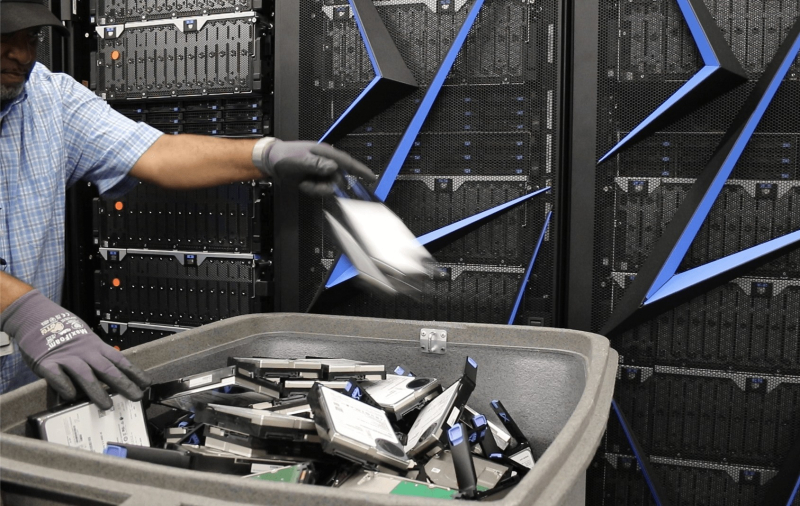According to experts at the US Department of Energy’s Oak Ridge National Laboratory (ORNL), supercomputers and their components are disposed of in the same way as unwanted paper – literally sent to a shredder. And very soon the laboratory staff will have to disassemble the Summit supercomputer, which is morally outdated, although it is still among the ten most productive systems in the TOP500 world ranking.
Summit was supposed to be decommissioned back in 2023, but due to its fairly high performance, it was decided to keep it in service almost until November 2024 as part of the SummitPLUS program. However, part of the complex is already being modernized. Thus, Alpine storage will be replaced by Alpine 2. Data from Alpine was transferred to other storage systems at the Oak Ridge Leadership Computing Facility (OLCF) supercomputer center. On November 19, Alpine2 will be switched to read-only mode, and then the storage configuration will be changed for use in other projects.
Alpine, based on the IBM Spectrum Scale parallel file system, was created for temporary storage of data from Summit and other systems. According to scientists, Summit was built to simulate processes in supernovae and fusion reactors, and it is unlikely that anywhere else there is the same concentration of hard drives in one place as in ORNL systems, with the possible exception of hyperscalers. In other words, even disassembling the Alpine, which began in the summer, is an extremely labor-intensive process, since the drives have to be removed manually and one at a time.

Image source: ORNL
Alpine consisted of 40 racks on an area of approximately 130 m2. The storage with a total capacity of 250 PB included 32494 HDDs. We are talking about almost 20 tons of equipment. To ensure truly secure data deletion, HDDs are taken away for physical destruction. ShredPro Secure is responsible for this process. HDDs are literally crushed by metal teeth into small fragments. It takes approximately 10 seconds to process one disk, and up to 3.5 thousand drives can be destroyed in a day. The resulting residues are finally disposed of as part of ORNL’s metal recycling program, so the laboratory also receives money for donating recycled materials.
Decommissioning large computing systems is an ongoing process that has become more efficient over the years. The last time a large storage facility (Atlas) was disposed of was in 2019; it included about 20 thousand HDDs. Disposal on our own took about 9 months and turned out to be very expensive. ShredPro Secure was much quicker and the process was much cheaper. Therefore, the company eventually sent about 10 thousand more HDDs from other systems for destruction. However, ORNL is now considering purchasing its own shredder to further improve safety and save even more in the long run.